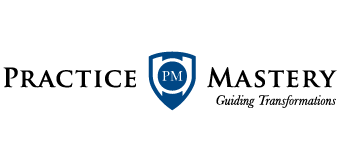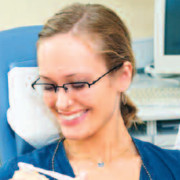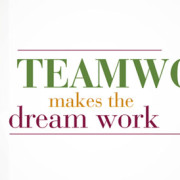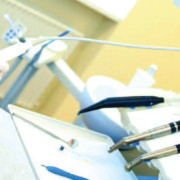Riding the Wave of Change
What got you HERE won’t get you THERE!
In Part One (DPM, Spring, 2009) of this three part series we examined the amazing power and impact that connecting with your patients on a deeper level can have on your business. In Part Two (DPM, Summer 2009) we explored the theory of “value creation” as it relates to the historically frowned upon concept of “selling” in dentistry. Now, in Part Three, we will move on to discussing arguably one of the most impactful variables that determines the “Success” of a dental office. First, let’s outline exactly what “success” really means. When I say “success” I’m referring to much more than just “financial reward!” I can never forget what a new client recently told me while we were examining his production numbers; he said; “Peter; don’t focus too much on our numbers, because they are not a reflection of the chaos that it took to produce them, we are stressed, stretched and working way too hard to achieve these results.” Although his office was very profitable; in his heart he did not feel an authentic sense of business success. True business success consists of four components each of which must be present in order for us to feel a well-rounded sense of professional fulfillment in our workplace.
The most successful dental practice will:
- be profitable;
- it will have minimal complexity in its operational routines;
- team members will feel a purposeful sense of fulfillment
- and your customers will show a fulfilling appreciation for the care and experience you provide them.
There is one primary talent that impacts an organization’s ability to achieve all four of these success variables. That talent is the team’s ability to innovate or re-invent.
Human beings are creatures of habit. As a result our first instinct is to find our greatest comfort and safety in the familiarity of the known. This causes team members to want to hold on to familiar routines and procedures at work. At the same time we have a somewhat conflicting emotional need for variety and uncertainty in order to feel a passionate sense of excitement and stimulation in our lives. The first instinct is necessary for survival in the wild animal kingdom. Unfortunately, it has little use for us in the business world. In fact its presence although prevalent in the workplace is quite counter productive. This primal characteristic is why so many offices today find themselves stuck and unable to mobilize the critical mass of people required to implement something new, better or different within their practice.
Any sign of resistance to change in the workplace should be seen as nothing more than a primal, instinctive self-preservation mechanism
I am reminded of a saying I heard many years ago… “The very successes that got us where we are today will eventually become the shackles that imprison us from further growth in the future.” Even your good habits will eventually imprison you if you hold on to them for too long! To break free of our habits we must develop the new habit of leaving the familiar behind. We must separate ourselves emotionally and psychologically from our stagnant circumstances. Our ability to establish a satisfying and integrated business lifestyle in a world of continual change requires that every member of our team develop the skill of “normalizing the new.” If you want to get to second base you must leave something behind by taking your foot off first base. In his book, “If It Aint Broke Break It” Robert Kreigel states it this way “in the face of accelerating change in every area of our lives, the conventional thinking that guided us in decades past is outdated. It is now clear that conventional wisdom that worked in the calm seas of the past won’t work in today’s turbulent rabidly changing environment.”
Experienced dental teams who hold onto outdated systems, approaches, and philosophies will tend to run into more and more roadblocks as time goes on. Simply put; if the ice is melting and you’ve still got your skates on you will become less and less effective and more and more frustrated over time.
We live in a rapidly changing world where countless manifestations of technology pervade our business community. These changes significantly affect the social, economic and cultural outlooks of dental consumers. Success in the 21st century business environment requires the ability to collaborate innovatively and creatively with others.
If we are to thrive in the 21st century, then it will be up to the entire team to keep up with the subtle yet collectively impactful changes that are occurring on the landscape of our wonderful profession. In fact any sign of resistance to change in the workplace should be seen as nothing more than a primal instinctive self preservation mechanism that helps people to protect and justify their existing ways of doing things. Resisting change is like driving your car but insisting on using (looking into) your rearview mirror to steer it. This approach is can be dangerous in business and in life because it renders you out of control since you are not acting in accordance with the realities of the changing terrain ahead of you.
The solution to this is simple! We must develop internal muscles to counter the forces of our instinctive psychology. Unfortunately many dental teams today are not skilled in being able to break free of these gravitational systems. This is because the gravitation is not outside of us. It’s inside of us and consists of our ideas, beliefs, experiences and the whole habitual way we go about to constructing our work day. As a team we have to become strong enough to go against our own belief systems and habits. We also have to become strong enough to go against other peoples belief systems and their habits.
Choose the continuous path of creative re-invention and innovation and you will experience the full joy of your chosen profession
This phenomenon is described clearly in the parable about “The Boiling Frog Syndrome.” The boiling frog story is a widespread anecdote tale describing a frog slowly being boiled alive. The premise is that if a frog is placed into hot water, it will jump out instinctively and immediately, but if it is placed in cold water and allowed to swim around and get comfortable in its environment then as the water is slowly heated, the frog not sensing any sudden change in its environment will not perceive the subtle but increasing danger and it will keep accepting its minor inconveniences (increased heat) until it is cooked to death. This story is often used as a metaphor for the inability of people to react to important changes that occur gradually in their personal or professional lives.
The following are simple but effective tools you can use for keeping your practice un-stuck and on the cusp of innovation…
- Have monthly creativity brainstorming meetings;
- Prior to team meetings have one team member research an innovative idea. Then present it at the team meeting. Discuss, customize and implement it;
- Attend courses and implement new ideas;
- Read journals and implement new ideas;
- Re-invent new ways of doing things that are already working well in your practice;
- Poll your customers to find out how they are thinking, feeling and changing;
- Adopt a business philosophy of never being satisfied with the status-quo;
- Explore new ideas with curiosity… and not through your defensive self preservation mechanisms;
- Modernize the look and feel of your practice decor;
- Be technically proficient and be able to offer the most up-to-date clinical services;
- Find a mentor and consider becoming a mentor (teaching others is the highest form of learning);
- Become involved in a study club group and learn about other peoples approach to practicing dentistry
Many of us find change difficult, so we drag our feet or avoid it at all costs. In order to embrace change, you must change the way you look at change. Move away from the panic and fear that grips you. Change is an opportunity to create something new for you and your practice so that your life becomes more fulfilling.
In your dental office, if you are the owner; you are also the CEO. You are in charge of running the practice and making sure everything happens the way it’s supposed to happen. In most other industries, and certainly with big companies, CEOs change from time to time. A new CEO brings a fresh way of looking at the business, a new way of dealing with customers, and certainly uses his or her past successes and experiences for the benefit of the new company. However if you are the CEO of your dental business you probably aren’t going to a new practice any time soon. The only way to clear your eyes and keep your dental offices fresh with new ideas is to follow the above 12 steps and tap into the collective wisdom of each member of your team; especially your newest team members who most likely have the freshest viewpoints!
Keep exploring your horizons and remember this saying “the future belongs to the learners while the learned will inherit a world that no longer exists.” In the words of the great Martin Luther King “we stand here today at the beginning of time free to pursue what ever path we choose for our future!” Choose the continuous path of creative re-invention and innovation and you will experience the full joy of your chosen profession and finally but most importantly remember that “what got you here; won’t get you there!”


 Originally Published in
Originally Published in 



